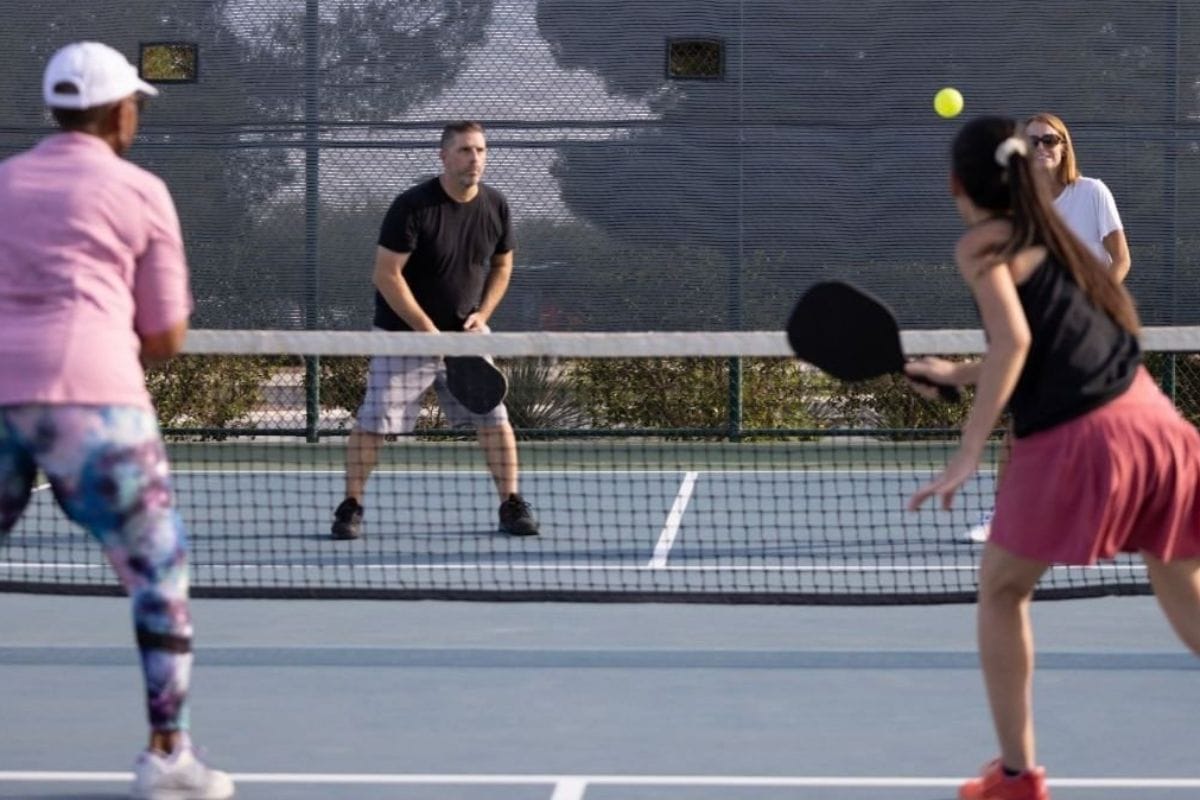Mastering the Art of Poaching in Pickleball: In the thrilling world of pickleball tournaments, poaching can be a game-altering tactic. The essence of poaching lies in crossing the centerline to intercept a shot intended for a partner, aiming to execute a high-pressure move that can disrupt opponents and potentially secure a point.
In competitive scenarios, where precision and timing are paramount, poaching should be employed strategically. For instance, when a player is stationed at the net and their partner is at the baseline, signaling an intention to poach can be a key move. This requires synchronization; the partner must adjust their position to cover the open court left by the poaching player.
If executed with skill, a poach can force the opponent into a defensive position, creating opportunities for the poaching team to score. However, this move carries risks. A poorly timed or inaccurate poach can expose the team to counterattacks, leaving half of the court vulnerable. Thus, communication and situational awareness are crucial to mitigate these risks and capitalize on the opportunity.
Successful poaching relies on the ability to anticipate and react to floating balls. When opponents send a ball with less speed or trajectory, it presents a prime opportunity for a poach. The poaching player must have confidence in their shot execution, as a successful poach can shift the momentum of the game. Nevertheless, if the poaching attempt fails or results in an unforced error, the team might face a significant disadvantage. Therefore, players need to assess their proficiency and readiness before committing to this aggressive tactic.
The Ethics of Poaching in Recreational Play
Recreational play in pickleball, unlike competitive tournaments, places a premium on enjoyment, skill development, and cooperation. The use of poaching in these settings requires a distinct approach. While it can still be effective, the focus shifts from strategic advantage to maintaining a positive playing experience for all participants.
In casual games, the primary goal is often to allow each player to engage actively and improve their skills. Poaching in recreational play can sometimes be viewed as inconsiderate if it deprives a partner of the chance to make a play and gain experience. For example, if a partner is well-positioned to handle a shot, intercepting it for personal gain might hinder their development. The emphasis should be on facilitating opportunities for all players to contribute and learn, rather than solely focusing on winning points.
However, there are scenarios where poaching becomes a necessary strategy. If a partner is pulled out of position, leaving a significant coverage gap, a well-timed poach can help protect the court and maintain defensive balance. In such cases, poaching can be justified to safeguard the team’s position. Nonetheless, in most recreational settings, minimizing poaching and allowing partners to handle their side of the court fosters a more collaborative and enjoyable atmosphere.
Balancing Strategy and Team Dynamics
Ultimately, the decision to poach depends on striking the right balance between competitive strategy and team dynamics. In tournament play, poaching serves as a tactical skill designed to capitalize on opportunities and display individual tactics. It can lead to crucial victories and enhance team performance when executed effectively.

In contrast, recreational play prioritizes a supportive and cooperative environment. The emphasis is on ensuring that all players have the chance to participate fully and develop their skills. Poaching, while still an option, should be approached with consideration for the overall playing experience and the well-being of the partner.
By understanding the context of the game and adapting poaching strategies accordingly, players can enhance their performance while contributing positively to the game’s dynamics. Whether in a competitive or recreational setting, aligning poaching tactics with the nature of the match helps ensure that the approach supports strategic goals and the enjoyment of the sport.
News in Brief: Mastering the Art of Poaching in Pickleball
Poaching in pickleball involves crossing the centerline to intercept a shot intended for a partner, aiming to disrupt opponents and secure a point. In competitive play, this tactic requires precise timing and communication, as a successful poach can shift game momentum, but a poorly executed one risks exposing the team. In recreational play, where enjoyment and skill development are priorities, poaching should be used sparingly.
Overuse can prevent partners from gaining experience and disrupt the collaborative atmosphere. While necessary in certain situations, such as covering a partner’s open court, balancing poaching with team dynamics ensures a positive playing experience and supports skill growth. Understanding when and how to poach enhances competitive play and recreational enjoyment.
ALSO READ: Peekskill’s Pickleball Courts Delays Resolved: Opening Soon

